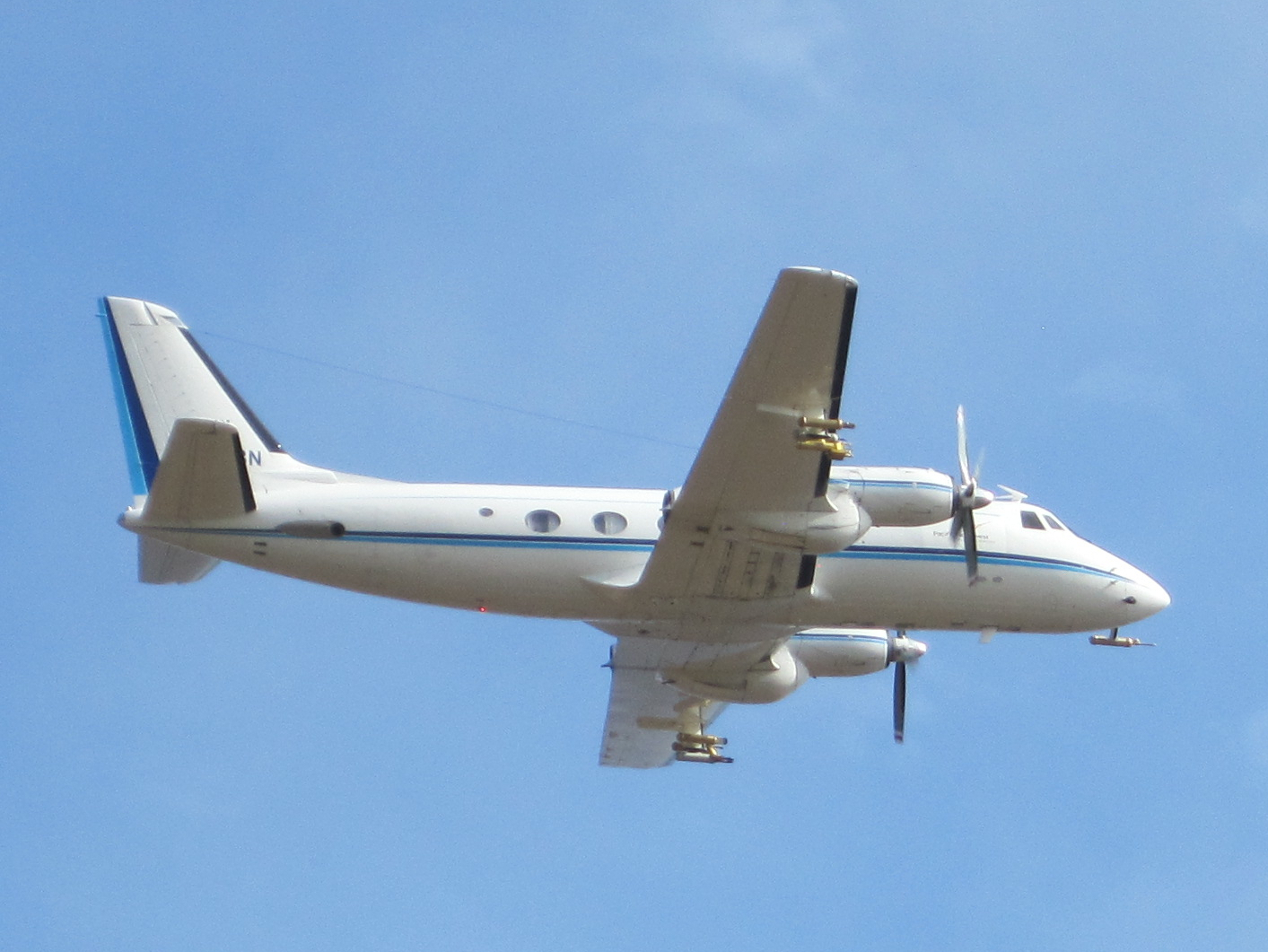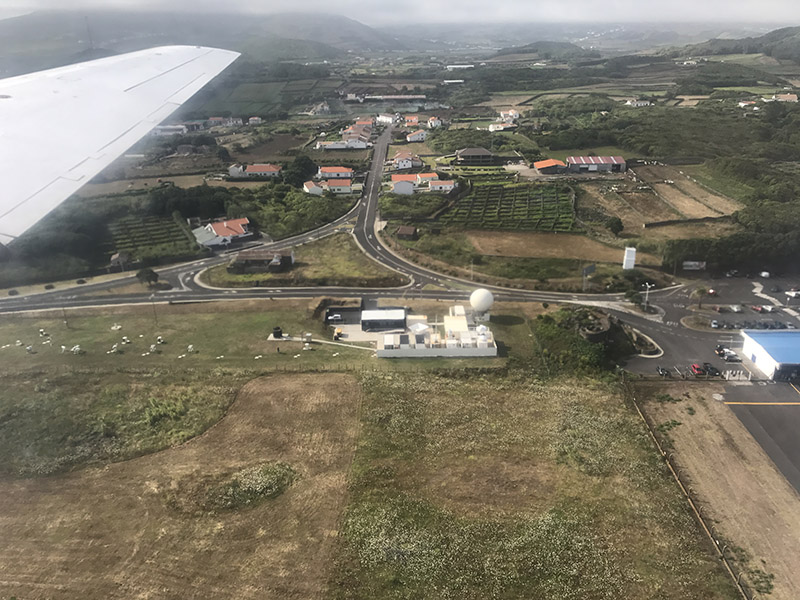ACE-ENA Data Sets Take Center Stage During AGU and AMS Meetings
Published: 16 February 2021
Scientists put ARM field campaign’s data sets to work

Abundant above the Earth, low clouds affect earth systems globally. Despite their importance, these clouds are not well-represented in global climate models. Therefore, low clouds’ response to changes in atmospheric aerosols has been a significant source of uncertainty in climate simulations.
During two intensive operational periods (IOPs) in summer 2017 and winter 2018, an ARM field campaign called Aerosol and Cloud Experiments in the Eastern North Atlantic—or ACE-ENA for short—generated a collection of ground and aerial observations. The goal was to advance scientific understanding of the microphysics, macrophysical structures, and radiative properties of marine clouds, and the associated aerosol properties and processes in regions where the aerosol impact is the greatest.
The ACE-ENA campaign took place at ARM’s Eastern North Atlantic (ENA) atmospheric observatory in the Azores, a remote island chain with persistent but diverse subtropical marine boundary layer (MBL) clouds. ENA ground observations were complemented by data collected onboard the ARM Aerial Facility’s now-retired Gulfstream-159 (G-1) research aircraft. The U.S. Department of Energy’s Atmospheric System Research (ASR) is supporting data analysis from the campaign.
Recent ARM blogs by ACE-ENA Principal Investigator Jian Wang of Washington University in St. Louis, ACE-ENA Co-Investigator Pavlos Kollias of Stony Brook University in New York, and ACE-ENA Co-Investigator Rob Wood of the University of Washington offer ACE-ENA overviews and findings.
A key outcome of ACE-ENA is an extensive series of data sets, now freely available to the scientific community through ARM Data Discovery.
Three years after ACE-ENA, researchers are digging into a wealth of ARM data. This was evident during the December 2020 American Geophysical Union (AGU) Fall Meeting and the January 2021 American Meteorological Society (AMS) Annual Meeting. At both virtual conferences, scientists made presentations featuring the bountiful and complex ACE-ENA data sets.
ACE-ENA Research at AGU

During the virtual AGU Fall Meeting, held December 1 to 17, 2020, Xiquan Dong, an ACE-ENA co-investigator from the University of Arizona, and Qiuxuan Zheng of Rutgers University in New Jersey spoke about the analysis of retrievals taken during the field campaign.
Dong says his team’s findings—validated by ARM aircraft measurements—provide insights for improving the understanding of warm rain processes and improving model simulations.
“It is a great challenge to retrieve marine boundary layer cloud and drizzle microphysical properties simultaneously,” says Dong. “The first step to address this is to decompose drizzle and cloud reflectivity in MBL clouds from ARM cloud radar reflectivity measurements, and then simultaneously retrieve both cloud and drizzle microphysical properties during the (ACE-ENA) campaign.”
Zheng, meanwhile, focused on the relationship between reflectivity and summertime rainfall rates during ACE-ENA. Drizzle evaporation, she says, is a chief parameterization that contributes to errors in global earth system models.
“Clouds in this region often undergo a latitudinal transition in morphology from a single cloud layer to complex broken cloud structure that exhibits mesoscale organization,” says Zheng, “and this transition is associated with MBL decoupling and is frequently observed in the wake of cold fronts. Simulations suggest that the cloud transition over the eastern North Atlantic is initiated by increases in surface fluxes and vertical turbulent transports.”

Zheng and her colleagues used ACE-ENA observations and several years of ARM data from the ENA site to calculate rainfall and evaporation rates across cloud classifications. They used ARM aircraft observations, a second-generation Ka-Band ARM Zenith Radar (KAZR2), and a laser ceilometer, which measures cloud height.
In an invited presentation, Yuan Wang of the California Institute of Technology discussed the impacts of long-range transport of aerosols on the MBL. This work used ACE-ENA aircraft measurements and ground-based remote sensing data along with an aerosol-aware Weather Research and Forecasting (WRF) model to characterize the aerosols due to long-range transport over a remote region and to assess their possible influence on MBL clouds.
Yuan Wang and his co-authors of a 2020 Atmospheric Chemistry and Physics paper found that remote regions like the ENA experience frequent human-caused aerosol intrusions from the continental United States. Moreover, aerosols originating from the boundary layer exert a more significant microphysical influence on MBL clouds than those entrained from the free troposphere.
Other ARM users who presented ACE-ENA results at AGU:
- Peiwen Wang of Stony Brook University shared results of micro-spectroscopic analysis of ground and airborne aerosol samples, including ice-nucleating particles.
- Zhibo Zhang of the University of Maryland, Baltimore County, discussed findings on vertical dependence of horizontal variation of cloud microphysics.
ACE-ENA Research at AMS

ACE-ENA data are helping scientists better understand the budget of cloud condensation nuclei (CCN) in the marine boundary layer, cloud and drizzle microphysics, and aerosols’ effects on marine low clouds and precipitation in the region. The data’s value was evident during the AMS Annual Meeting from January 10 to 15, 2021.
The 13th Symposium on Aerosol-Cloud-Climate Interactions included a session on aerosol, cloud, and precipitation interactions during ACE-ENA IOPs. The wide-ranging session was co-chaired by Dong, Zhaoyi Shen of the California Institute of Technology, and Youtong Zheng of the University of Maryland, College Park.
Jian Wang gave an invited talk addressing vital processes that drive CCN populations in the remote marine boundary layer. The analysis drew upon ACE-ENA aerial measurements and long-term atmospheric observations at the ENA site. The presentation reflected findings from three recent papers, including one recently published in Nature Communications (see more details below).
“The conventional view is that new particle formation rarely occurs inside the remote marine boundary layer,” says Jian Wang. “By combining aircraft measurements and ground observations, we found that new particle formation happens quite regularly in the upper part of the remote marine boundary layer. This often happens following the passage of cold fronts.”
Jian Wang adds that this happens more frequently during the winter. Other key findings of his team include:
-
The higher accumulation-mode particle concentration (particles with diameter larger than ~100 nanometers) in the lower free troposphere during summer is due to more frequent long-range transport of continental emissions from North America. These particles represent most of the CCN in marine environments.
- The entrainment of free troposphere air does not serve as a direct source of accumulation mode particles, such as CCN in the MBL.
- Secondary organics are the dominant condensing species during about 80% of growth events observed at the ENA site.
- Condensational growth of nucleation and Aitken mode particles are important sources of CCN in the MBL. The contribution may be underestimated in global models.
“By combining aircraft measurements and ground observations, we found that new particle formation happens quite regularly in the upper part of the remote marine boundary layer. ”
Jian Wang, ACE-ENA principal investigator
The session featured other ARM users:
- Wood gave an invited presentation on the use of G-1 and ENA ground data to look at seasonal contrasts in cloud-aerosol interactions.
- Dong presented a microphysics scheme updated to improve earth system model simulations.
- Zhang discussed how MBL clouds have an important role in the climate system—with warm rain as a potent modulator of the water budget and radiative properties.
- Neel Desai of Brookhaven National Laboratory (BNL) in New York discussed ongoing work that uses high-resolution holography to investigate the effect of turbulence and cloud microphysics on auto-conversion rates.
- Jaemin Yeom of Michigan Technological University presented studies of wind shear effects on entrainment mixing in marine stratocumulus clouds observed during a campaign conducted jointly with ACE-ENA’s summer IOP.
New Paper on the Heels of AMS
Shortly after AMS concluded, Jian Wang and a multi-institutional team published a pivotal paper in Nature Communications that presents new findings based on ARM’s ACE-ENA data.
The authors reveal how aerosol particles that seed clouds’ formation can form out of next to nothingness over the open ocean. This “new particle formation” occurs when sunlight reacts with molecules of trace gases in the marine boundary layer.
Jian Wang, along with lead authors Guangjie Zheng and Yang Wang, initiated the study while working at BNL. All three are now at Washington University in St. Louis.
“For a long time, people thought this process was very rare,” says Jian Wang. “We found from our study, however, that it happens quite frequently.”
“When we say ‘new particle formation,’ we’re talking about individual gas molecules, sometimes just a few atoms in size, reacting with sunlight,” adds study co-author Chongai Kuang of BNL. “It’s interesting to think about how something of that scale can have such an impact on our climate—on how much energy gets reflected or trapped in our atmosphere.”
Keep up with the Atmospheric Observer
Updates on ARM news, events, and opportunities delivered to your inbox
ARM User Profile
ARM welcomes users from all institutions and nations. A free ARM user account is needed to access ARM data.


















